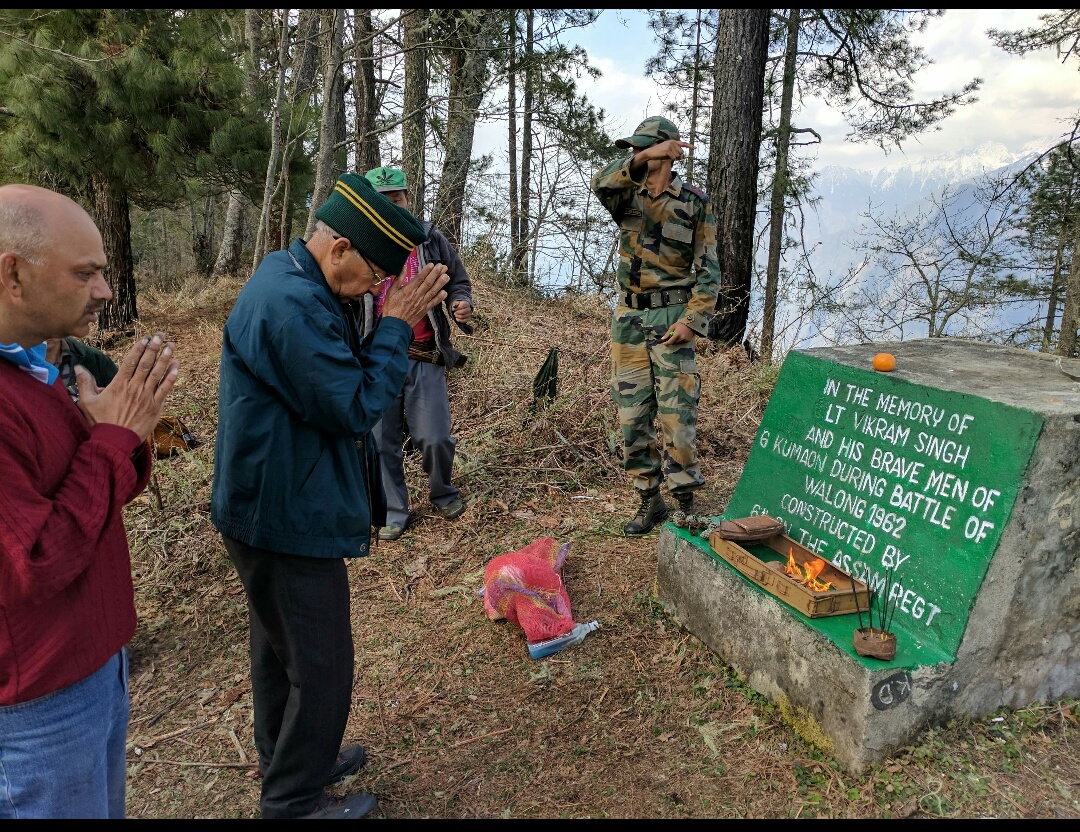On 21 October 1962, just before midnight, Chinese soldiers began shelling artillery and volleying gunfire onto Indian posts at Kibithu from their bunkers located some 700 meters away. Soon, a full battalion of Chinese soldiers launched their attack on Indian jawans. Despite being outnumbered, the 3-inch Mortar Detachment unit of the 6 Kumaon Regiment, one of the oldest infantry regiments of the Indian Army fought to hold off the Chinese advance. Heavily outnumbered and outgunned unit was soon asked to withdraw to Walong, as stated in India’s official history of the 1962 war, published by the Ministry of Defence in the early 1990. This was the beginning of India’s three week-long heroic defence of Walong from 23 October to 16 November. This was also the battle that went down in history as the only Indian counterattack during the 1962 war.
How will you react if I told you that, the Infantry Brigade which was to defend Walong against 10000 strong Chinese forces moving head on towards Walong was created a few weeks before this action, and neither it had any artillery support nor adequate weapons and ammunition. The Brigade Commander wanted to halt the Chinese advance to save Walong from falling in Chinese hands so began a defensive battle at Walong. Lt Bikram Singh Rathore of 6 KUMON was asked to occupy a screen position ahead of Ashi Hill. Screen is a tactical position deployed to deceive the enemy about its actual position and extent of deployment.
At Namti Nallah on 22/23 Oct night , while in Command of Delta Company (100 men) Lt Bikram Singh confronted and Ambushed 153 Regt of People’s Liberation Army (PLA) of China which comprised around 3000 soldiers. He had cleverly loosened and removed the last few planks of the footbridge on the Nallah and waited for enemy soldiers to start crossing it. The enemy soldiers were concentrated on the bridge and went into a panic after some of them fell into the Nallah. That is when Lt Bikram lighted up the entire area using illumination rounds exposing the enemy in most vulnerable position. He then took them on with all the weapons he had, ensuring they were left with no choice but to retreat leaving behind 200 dead after accepting humiliating defeat. This incident was on day one of PLA intrusion on Indian soil .
Lt Bikram Singh was next sent on Point 2847 of West Ridge which was the most vital post he held from 6 Nov to 16 Nov 1962. His task was to deny enemy advance till 1100h on 16 November. Delta Company gave stubborn resistance to 388 Regt of PLA and averted fall of Walong garrison till 1200h that day. He with his 107 brave soldiers fought gallantly till his ammunition lasted and thereafter went in CQB (close quarter battle) using hands, bayonets and anything that the soldiers could lay there hands on, much the same way Abhimanyu had fought Kauravs in the war of Mahabharata. His position was thereafter overrun by the numerically superior
enemy.
Lt Bikram and his 107 soldiers remained ‘missing in action’ (MIA) for 24 Years after the war. In 1986, accidentally, the remnants of our brave soldiers, their weapons and equipment were discovered by another unit on a feature called Helmet Top post. It was then learned by the world about this eternal resting place of Lt Bikram Singh Rathore and his brave men. Enemy suffered over 500 dead before Lt Bikram ( the last on post ) laid down his life serving the mother land . Lt Bikram Singh Rathore therefore became the biggest unsung hero of 1962 war .
At the age of 22 this brave heart was killed in action with his ‘Boots On’ & ‘LMG in hand’ on this day in 1962. The CO, Col Madaih & rest of batallion was taken POW on Nov 16, 1962. They were returned to India in Mar of 1963. Upon his return, Col Madiah wrote a citation for Lt Bikram Singh for the award of India’s highest honour Param Veer Chakra (PVC) but almost 6 months had passed by so the matter remained buried in a file in Delhi. Does it not make you angry?
Another complexity for a PVC citation was, that two witnesses are required for processing a citation for the award of PVC but in his case, there was only one -Sep Ram Singh (Bikram’s wireless set operator) as rest fell fighting. Is that not enough to shake every right thinking Indian about the bureaucratic hassles a soldier has to go through for recognition of his supreme sacrifice in the service of the nation?
In his last letter to his family (Dated Nov 11, 1962), Lt Bikram wrote “the traditions of our race cannot be forgotten, I have killed many and will continue to kill more until the enemy finishes off”.
